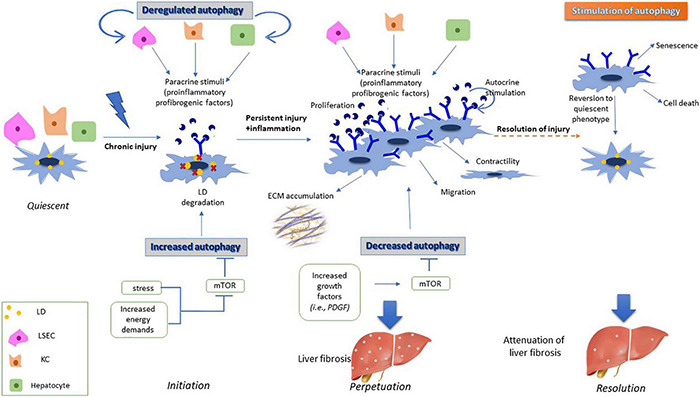FIGURE 1.

Effects of autophagy on HSC activation. During initiation phase, dysregulation of autophagy in injured liver cells such as LSECS, KCs and hepatocytes result in secretion of proinflammatory and profibrogenic signals. These signals are incorporated by HSCs, thus inducing expression of various membrane receptors, and becoming more responsive to external signals. Moreover, increased energy demands of HSCs during their transformation to myofibroblast cells results in degradation of their lipid droplets through lipophagy. During perpetuation phase, increased expression of growth factors in aHSCs leads to downregulation of autophagy, with aHSCs having acquired fibrogenic properties such as proliferation, contractility and secretion of ECM components, thus leading to liver fibrosis. However, induced autophagy during the perpetuation phase leads to either senescence, cell death or reversion of aHSCs to their quiescent phenotype resulting in attenuation of the fibrotic process.
